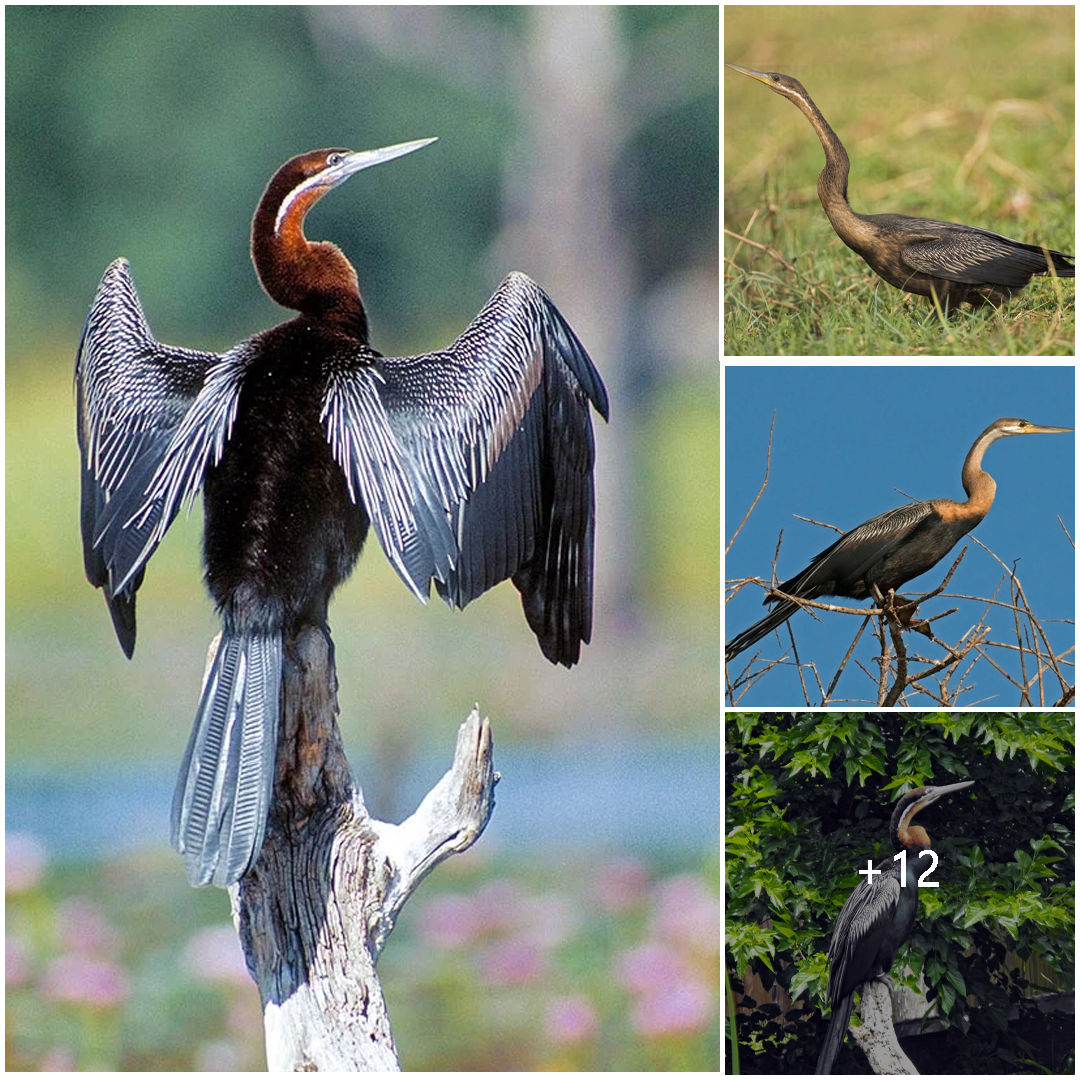
Exploring the Fascinating Anhinga Rufa Melanogaster: The Black-bellied Darter
Anhinga rufa melanogaster, commonly known as the black-bellied darter, is a captivating bird species that inhabits the wetlands and waterways of tropical and subtropical regions. With its distinctive appearance, fascinating behavior, and important ecological role, the black-bellied darter holds a special place in the biodiversity of its native habitats. Let’s delve into the world of this enigmatic bird and uncover its secrets.
A Vision in Contrast: The Striking Appearance
The black-bellied darter is named for its striking plumage, which features a glossy black body contrasted by a distinctive white stripe along its neck and chest. Its slender, elongated neck and sharp, pointed bill are adapted for hunting fish underwater, while its long tail feathers aid in maneuverability during flight. This unique combination of features makes the black-bellied darter a visually stunning sight in its natural habitat.
Master of Aquatic Pursuits: Fishing Behavior
As a piscivorous bird, the black-bellied darter is highly skilled in the art of fishing. Using its dagger-like bill, it spears fish beneath the water’s surface with remarkable precision and efficiency. Unlike many other waterbirds, the black-bellied darter lacks waterproofing oils on its feathers, which allows it to dive deeply and swim gracefully underwater in pursuit of its prey. Its hunting prowess and adaptability make it a formidable predator in aquatic ecosystems.
Ecological Significance: Maintaining Aquatic Ecosystem Health
The black-bellied darter plays a crucial role in maintaining the health and balance of aquatic ecosystems. By preying on fish populations, it helps regulate prey numbers and prevent overpopulation, thus contributing to the overall stability of freshwater habitats. Additionally, as a species sensitive to changes in water quality and habitat degradation, the presence of black-bellied darters can serve as an indicator of environmental health and ecosystem integrity.
Conservation Challenges and Efforts
Despite its ecological importance, the black-bellied darter faces numerous threats to its survival. Habitat loss, pollution, and human disturbance pose significant challenges to populations in many regions. Conservation efforts focused on habitat restoration, pollution mitigation, and the establishment of protected areas are essential for safeguarding the future of this iconic bird species. Public awareness and education initiatives can also help foster appreciation for the importance of conserving wetland habitats and the biodiversity they support.
Preserving Nature’s Treasures
Anhinga rufa melanogaster, the black-bellied darter, serves as a symbol of the beauty and diversity of wetland ecosystems. As stewards of the natural world, it is our responsibility to protect and preserve species like the black-bellied darter for future generations to admire and appreciate. By working together to address the challenges facing wetland habitats and the creatures that depend on them, we can ensure a brighter and more sustainable future for all.






